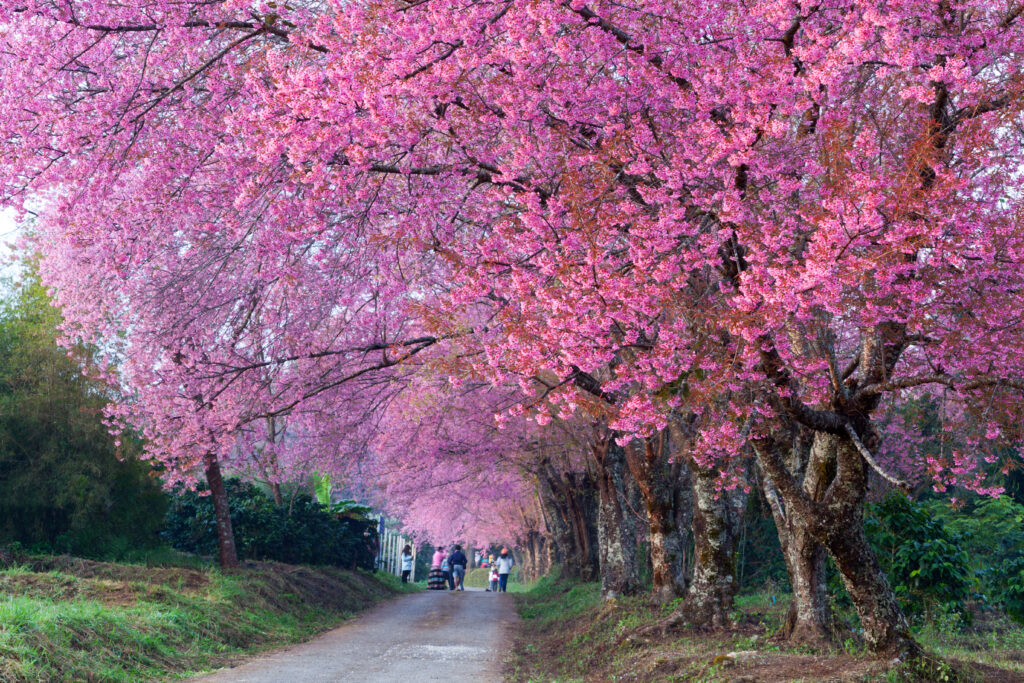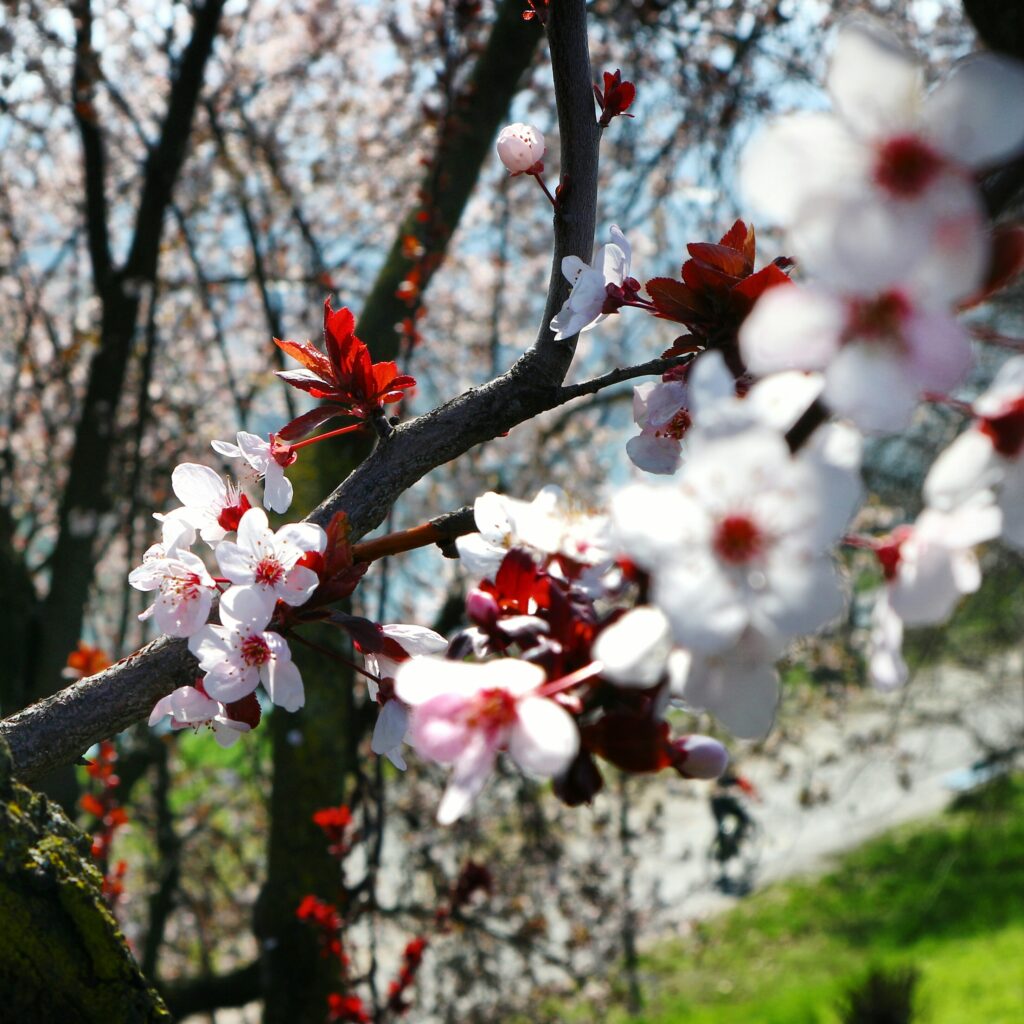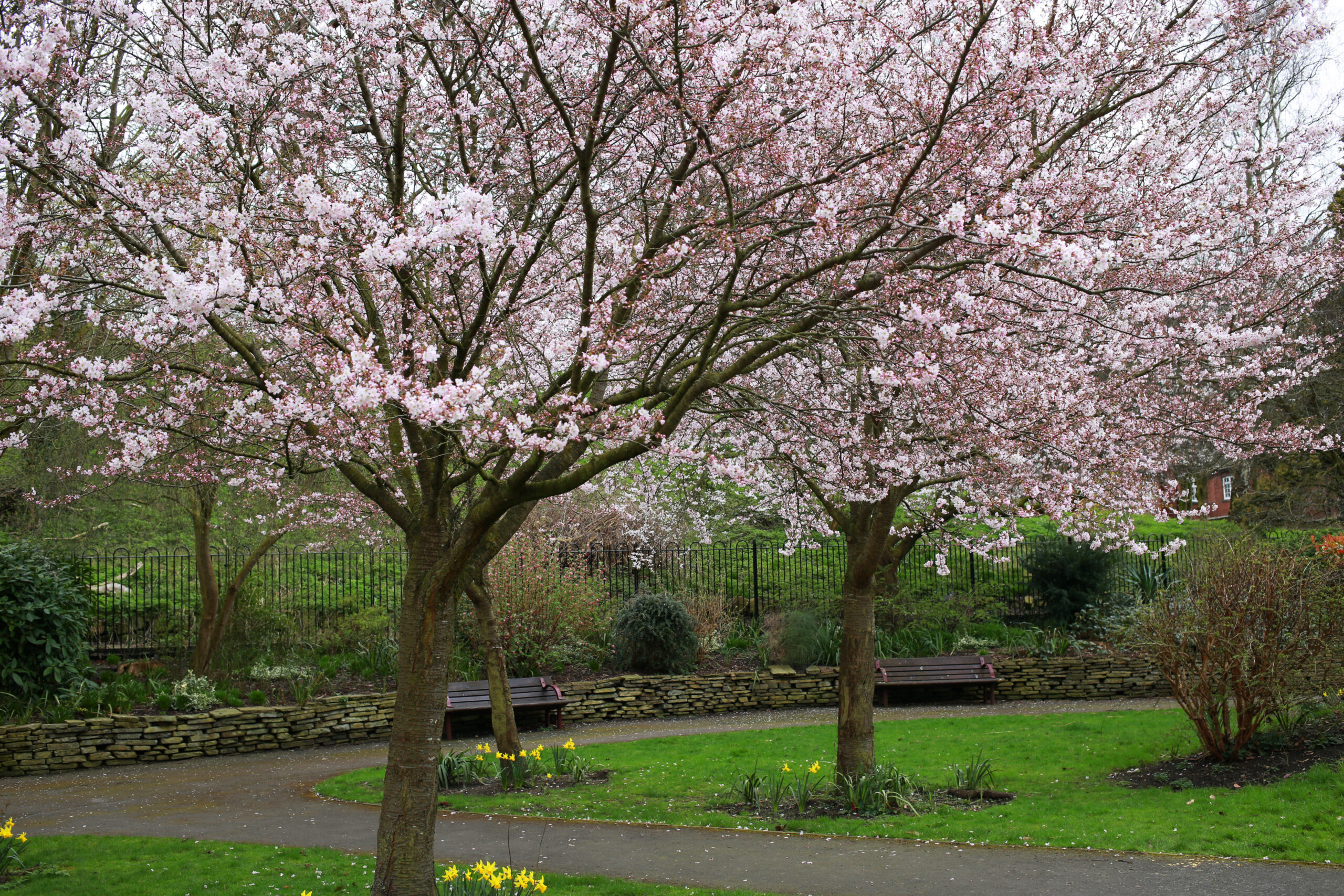Key Takeaways
- Plant your weeping cherry tree in well-draining soil and a sunny location to promote healthy growth and beautiful blossoms.
- Regularly water your tree, especially during dry periods, to keep the soil moist but not waterlogged.
- Apply a balanced fertilizer in early spring to provide essential nutrients for optimal development.
- Keep an eye out for common pests like aphids and diseases like leaf spot, and address them promptly to prevent damage to your tree.
- Prune your weeping cherry tree in late winter to early spring to maintain its shape and encourage new growth.
- Monitor your tree for any signs of stress or disease, and take appropriate action to ensure its long-term health and vitality.
Understanding Weeping Cherry Trees
Basics and Types
Weeping cherry trees come in various varieties, including the Higan cherry, Yoshino cherry, and Snow fountain cherry. These trees are known for their weeping branches that create a cascading effect when in bloom. The basic characteristics of weeping cherry trees include graceful arching branches and delicate pink or white flowers.
The history and significance of weeping cherry trees date back to ancient Japan, where they symbolize the transient nature of life and the beauty in impermanence. These trees are often planted during Hanami, the traditional Japanese custom of enjoying the transient beauty of flowers.
Ideal Placement
When considering the placement of your weeping cherry tree, choose a location with enough space for its weeping form to flourish. Ensure that the area provides aesthetically pleasing views as these trees are often planted for ornamental purposes. Proper drainage is crucial to prevent waterlogging, which can harm the tree’s roots.
For optimal growth, ensure that the weeping cherry tree has adequate air circulation to prevent diseases caused by poor ventilation. Planting them in well-draining soil will help maintain healthy root systems and overall tree health.
Sunlight Needs
Weeping cherry trees thrive in full sunlight, requiring at least six hours of direct sunlight daily for healthy growth and abundant blooming. Insufficient sunlight can lead to sparse flowering and weak growth. Providing adequate sunlight is essential for promoting robust flower production throughout the blooming season.
Excessive shade can hinder flower production and overall tree vigor, so ensure that your weeping cherry tree receives ample sunlight exposure. Consider planting them in locations where they can receive unobstructed sunlight to maximize their blooming potential.
Planting Your Tree
Choosing the Right Spot
When planting a weeping cherry tree, it’s crucial to consider the soil quality and pH levels. Check if the area has well-draining soil to prevent waterlogging. Assess the landscape for any potential hazards like overhead wires or buildings that could obstruct growth. Ensure the spot receives adequate sunlight for optimal growth.
Planting Steps
To plant a weeping cherry tree successfully, begin by digging a hole twice as wide as the root ball but no deeper than the trunk flare. Position the tree carefully in the center of the hole, ensuring that the graft union is above ground level. Gently backfill with soil, tamping down lightly to remove air pockets. Water thoroughly after planting to help settle the soil and encourage root establishment.
Caring for Your Tree

Watering Needs
Weeping cherry trees need adequate watering to thrive. Water deeply but less frequently to encourage deep root growth. Adjust watering based on weather conditions and soil moisture levels.
Fertilizing Tips
Choose the appropriate fertilizer for weeping cherry trees. Apply fertilizer in early spring to support growth and blooming. Avoid over-fertilization, as it can harm the tree’s health.
Pruning Techniques
Correct pruning is vital for weeping cherry trees’ health. Prune in late winter or early spring to shape the tree and remove dead branches. Enhance air circulation and sunlight penetration through strategic pruning.
Enhancing Growth and Blossoms
Fertilizer for Pink Blossoms
To enhance the pink color of weeping cherry blossoms, use specific fertilizers rich in phosphorus. This nutrient plays a crucial role in promoting vibrant pink blooms. Follow recommended application rates to ensure optimal results.
Seasonal Care Tips
Implement seasonal care practices to maintain the health of your weeping cherry tree. Adjust watering and fertilizing schedules based on the time of year to meet the tree’s changing needs. Prepare the tree for winter dormancy to protect it during colder months and ensure a beautiful spring blooming season.
Managing Pests and Diseases
Common Pests
Weeping cherry trees are susceptible to common pests such as aphids, caterpillars, and scale insects. These pests can cause damage by feeding on the tree’s leaves and stems. To protect the tree, implement natural pest control methods like introducing beneficial insects such as ladybugs or lacewings that feed on these pests. You can use neem oil or insecticidal soap as organic solutions to deter pests.
Regularly monitor the tree for signs of pest infestation, including distorted leaves, sticky residue (honeydew), or visible insects. Early detection can help in addressing the issue promptly before it escalates. By keeping a close eye on your weeping cherry tree, you can intervene effectively and prevent significant damage.
Disease Prevention
To prevent fungal diseases like powdery mildew that commonly affect weeping cherry trees, maintain good sanitation practices. Remove fallen leaves and debris from around the tree to reduce the risk of fungal spores spreading. Adequate air circulation is crucial, so avoid overcrowding plants near the tree.
Proper watering techniques are essential for disease prevention. Avoid overhead watering to minimize moisture on the foliage, which can create an environment conducive to fungal growth. Water at the base of the tree early in the day to allow foliage to dry before nightfall.
In case your weeping cherry tree is affected by a fungal infection, treat it promptly to prevent further spread. Use fungicides specifically formulated for treating powdery mildew or other fungal diseases. Prune infected branches and dispose of them properly to contain the infection.
Pruning a Weeping Cherry Tree

Best Practices
We should follow best practices to ensure our weeping cherry tree thrives. Proper care and maintenance are crucial. Regular pruning, watering, and fertilizing are essential for the tree’s health. Seeking professional advice can address specific concerns effectively.
To maintain a healthy weeping cherry tree, it is vital to consider various factors. Adequate pruning helps in shaping the tree and removing dead or diseased branches. Consistent watering ensures the tree receives sufficient moisture, especially during dry spells. Fertilizing provides essential nutrients for robust growth.
Seeking guidance from arborists or experienced gardeners can offer valuable insights into caring for weeping cherry trees. These experts can provide tailored advice based on the tree’s condition and specific requirements. Consulting professionals is particularly beneficial when dealing with complex issues like pest infestations or diseases.
Timing and Techniques
Understanding the significance of timing is crucial when it comes to pruning and fertilizing weeping cherry trees. Each season presents unique opportunities for promoting healthy growth. Adhering to recommended techniques ensures optimal results.
Pruning should ideally be done during the tree’s dormant period in late winter or early spring. This timing minimizes stress on the tree and encourages vigorous growth once spring arrives. Fertilizing should align with the tree’s growth stages, providing nutrients when needed most.
Adapting pruning and fertilizing schedules according to the tree’s development stage is key. Younger trees may require more frequent pruning to establish their shape, while mature trees benefit from maintenance pruning to enhance their appearance and health. Fertilizing should be adjusted based on the tree’s nutrient requirements at different growth stages.
Additional Care Tips
Mulching and Soil Care
Using mulch is crucial for maintaining the health of your weeping cherry tree. It helps retain moisture in the soil and regulates temperature, promoting optimal growth. Opt for organic mulch materials like wood chips or bark to enhance soil quality and nutrient retention. Keep a close eye on the soil pH levels, adjusting them as necessary to create a favorable environment for your tree.
Winter Protection
Protecting your weeping cherry tree during winter is essential to ensure its survival. Shield young trees from harsh conditions by wrapping them in burlap, providing insulation against cold temperatures and wind. Avoid heavy pruning in late fall, as it can leave the tree vulnerable to damage during winter months.
Troubleshooting Common Issues
Addressing Leaf Drop
Weeping cherry trees may experience leaf drop due to various reasons. Overwatering is a common issue that can lead to root rot, causing the leaves to wilt and fall off. Pests such as aphids or spider mites can also damage the foliage, resulting in leaf drop. Diseases like powdery mildew or cherry leaf spot can affect the tree’s health, leading to leaf loss.
To address leaf drop in weeping cherry trees, it is crucial to identify the underlying causes. Check the soil moisture levels to ensure proper drainage and avoid overwatering. Inspect the leaves for any signs of pest infestation and treat them accordingly. If diseases are suspected, prune affected branches and apply appropriate fungicides to prevent further damage.
Fixing Poor Blossoming
Poor blooming in weeping cherry trees can be attributed to several factors. Inadequate watering or excessive fertilization can impact the tree’s ability to produce blossoms. Improper pruning practices may also hinder blooming by removing potential flower buds. Soil quality plays a significant role in blooming, with nutrient deficiencies affecting the tree’s overall health and flowering capacity.
To improve blooming in weeping cherry trees, address the root causes of poor blossoming. Adjust the watering schedule to ensure consistent moisture without waterlogging the soil. Properly fertilize the tree with balanced nutrients to support healthy growth and flower production. Prune the tree during the appropriate season, avoiding excessive cutting that may remove potential blooms. Consider conducting a soil test to determine any nutrient deficiencies and amend the soil accordingly for optimal blooming conditions.
